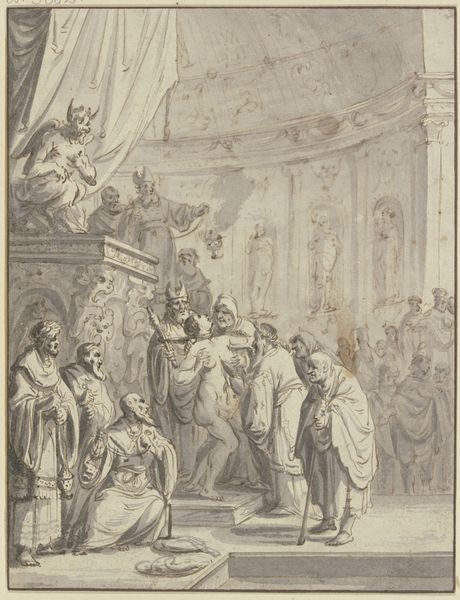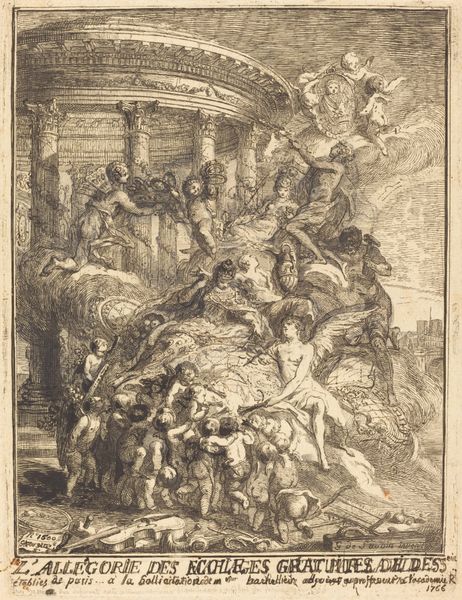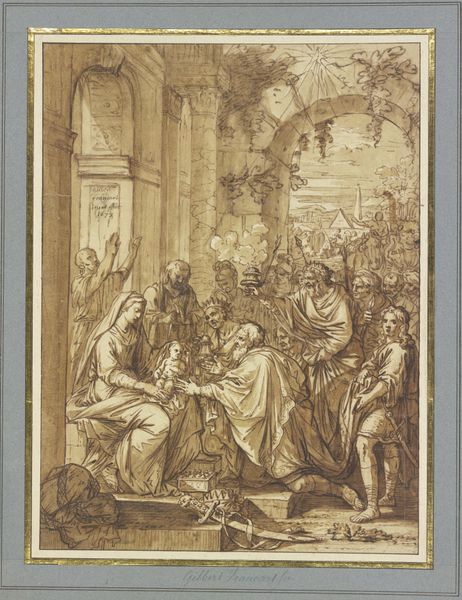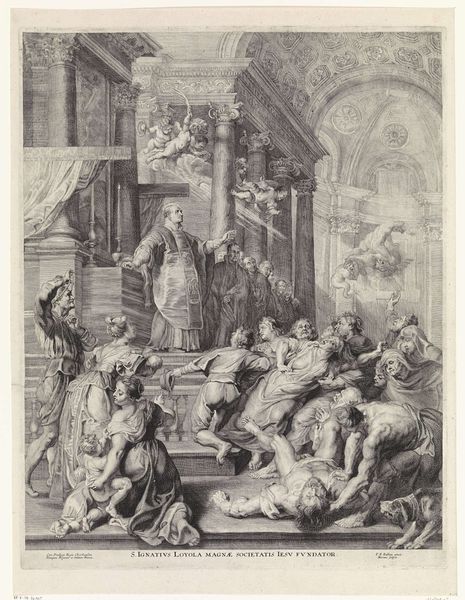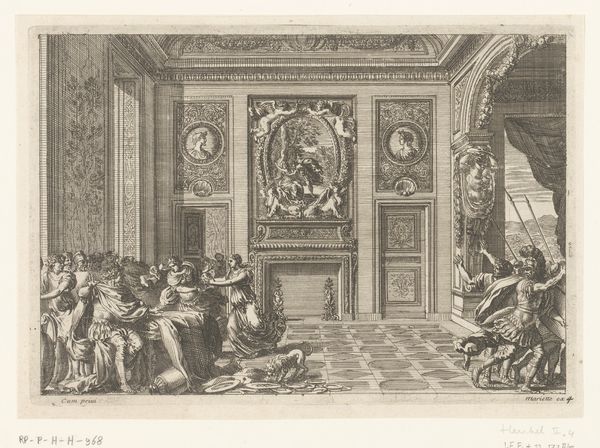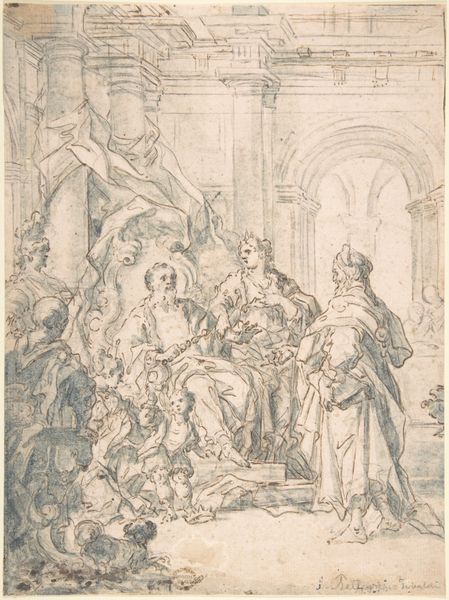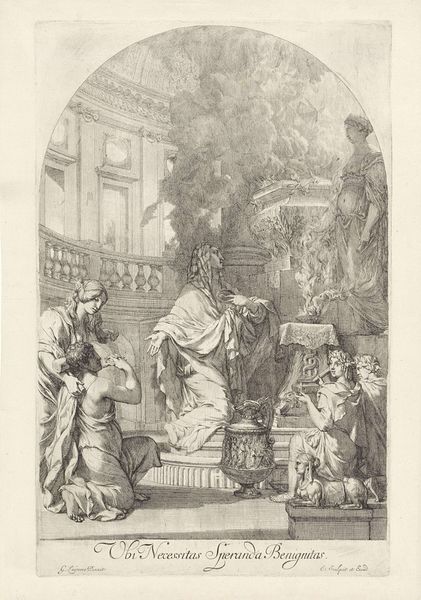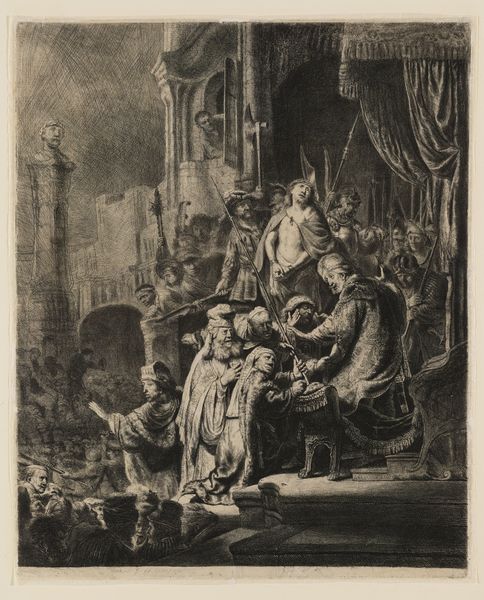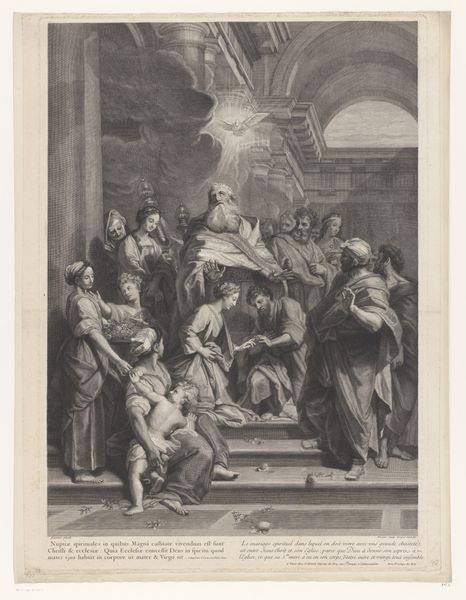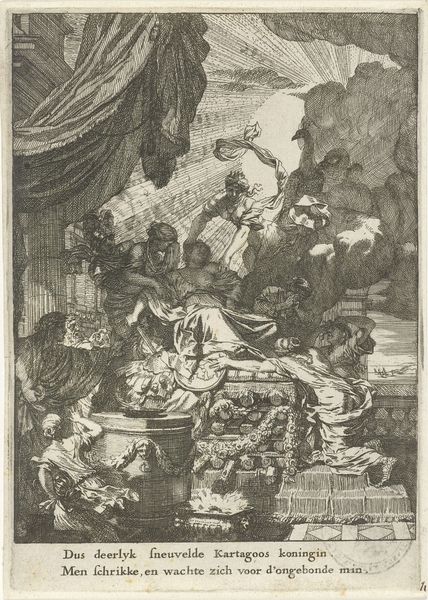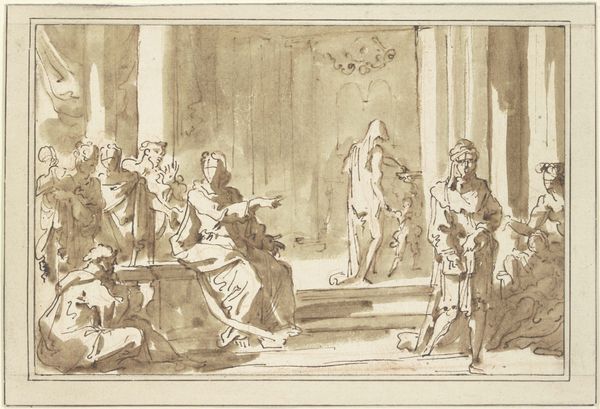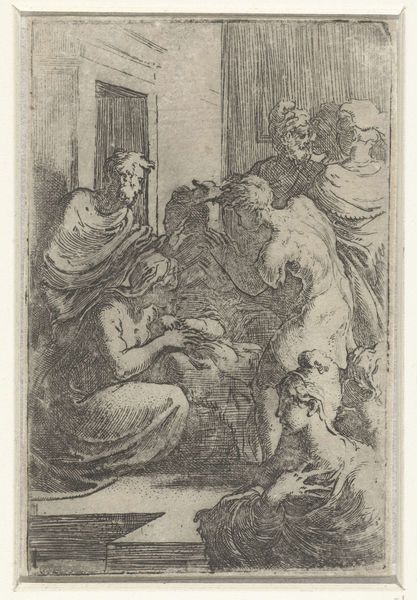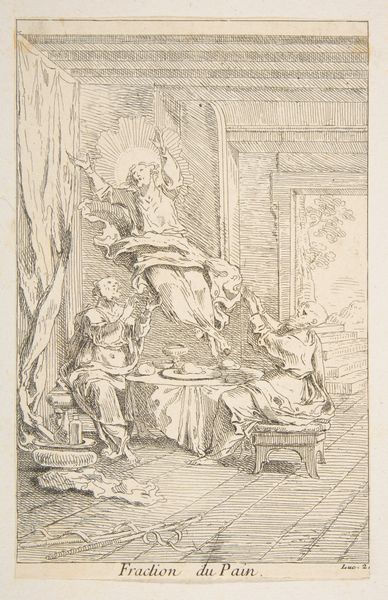
drawing, print, etching, paper
#
drawing
#
light pencil work
#
pen drawing
#
mechanical pen drawing
# print
#
pen sketch
#
etching
#
pencil sketch
#
old engraving style
#
paper
#
personal sketchbook
#
pen-ink sketch
#
france
#
pen work
#
pencil art
Dimensions: 165 × 126 mm (sheet; clipped within platemark)
Copyright: Public Domain
Curator: So, this is Gabriel de Saint-Aubin's "Mérope," a print from around 1750, housed here at the Art Institute. The level of detail achieved through etching is pretty stunning. It feels theatrical, almost staged. What catches your eye? Editor: The scene is very dynamic, even chaotic, yet the architectural rendering is so precise. I wonder about the printmaking process in creating this piece. What do you find most compelling? Curator: Considering its materiality, look at the paper itself. Paper was a valuable commodity. Prints allowed for wider distribution of images, making art more accessible. But what's interesting here is that Saint-Aubin elevates a popular dramatic form by investing it with this incredible technical skill. How does the method of production itself contribute to its meaning, considering it is meant to depict something from a Greek play? Editor: That makes me think about the role of printmaking in disseminating cultural ideas and the artist's own labor, imbuing the work with meaning. Did the act of reproduction somehow alter or reinforce the play’s themes? Curator: Exactly! The repetitive labor of printmaking mirrors, perhaps, the inescapable tragic fate in "Mérope." And note the quality; the labour of the artist contributes to what? The 'high art' aspect of it. Editor: I see what you mean! Examining the material production really opens up a richer understanding of its historical context. The print isn’t just a visual representation, but evidence of complex material conditions and artistic decisions. Curator: It reframes our understanding. Art becomes less about genius and more about situated practices. So, how does examining materiality change how we value art history? Editor: I think I'll never look at a print the same way again. The materials themselves tell a story that deserves to be understood. Thanks for pointing that out! Curator: Indeed, it enriches our perspective and adds another layer to art historical narratives!
Comments
No comments
Be the first to comment and join the conversation on the ultimate creative platform.
